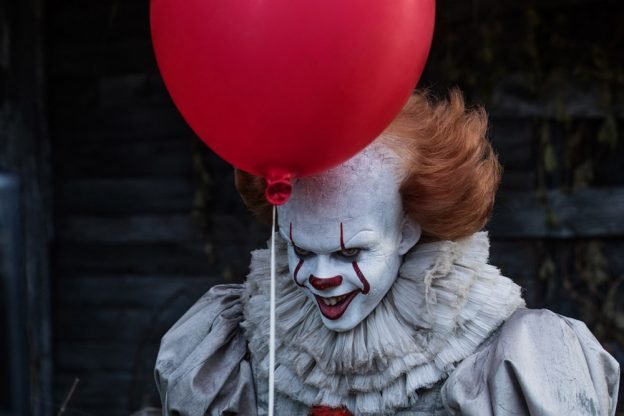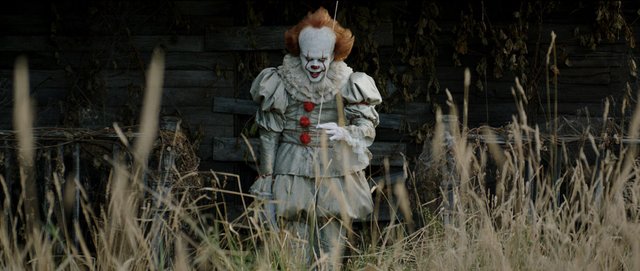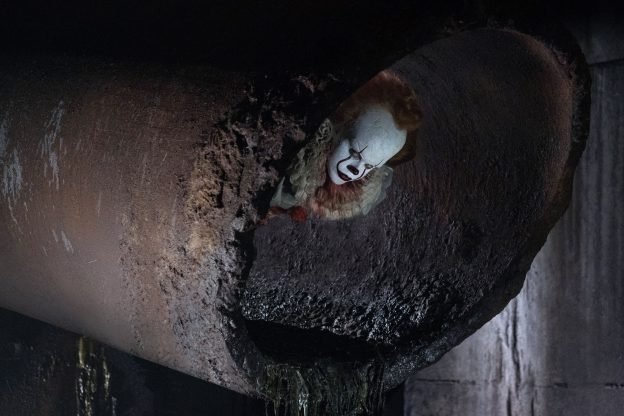Colorist Stephen Nakamura on grading Stephen King’s It

A scary clown can be thanked for helping boost what had been a lackluster summer box office. In its first weekend, Stephen King’s It opened with an impressive $125 million. Not bad!
Stephen Nakamura

This horror film takes place in a seemingly normal small town, but of course things aren’t what they seem. And while most horror films set most of the action in shadowy darkness, the filmmakers decided to let a lot of this story unfold in the bright glow of daylight in order to make the most of the darkness that eventually takes over. That presented some interesting opportunities for Deluxe’s Company 3 veteran colorist Stephen Nakamura.
How early did you get involved on It?
We came onboard early to do the first trailer. The response on YouTube and other places was enormous. I can’t speak for the filmmakers, but that was when I first realized how much excitement there was out there for this movie.

Had you worked with director Andy Muschietti before? What kind of direction were you given and how did he explain the look he wanted?
One of the concepts about the look that evolved during production, and we continued it in the DI, was this idea that a lot of the film takes place in fairly high-key situations, not the kind of dark, shadowy world some horror films exist in. It’s a period piece. It’s set in a small town that sort of looks like this pleasant place to be, but all this wild stuff is happening! You see these scary movies and everything’s creepy and it’s overcast outside and it’s clearly a horror movie from the outset. Naturally, that can work, but it can be even scarier when you play against that. The violence and everything feels more shocking.
How would you describe the look of the film?
You have the parts that are like I just described and then it does get very dark and shadowy as the action goes into dark spaces and into the sewer. And all that is particularly effective because we’ve kind of gotten to know all the kids who are in what’s called the Losers’ Club, and we’re rooting for them and scared about what might happen to them.

Can you talk about the Dolby Cinema pass? People generally talk about how bright you can get something with HDR, but I understand you were more interested in how dark the image can look.
Right. When you’re working in HDR, like Dolby lets you do, you have a lot more contrast to work with than you do in the normal digital cinema version. I worked on some of the earliest movies to do a Dolby Cinema version, and when I was working with Brad Bird and Claudio Miranda on Tomorrowland, we experimented with how much brighter we could make portions of the frame than what would be possible with normal digital cinema projection, without making the image into something that had a completely different feel from the P3 version. But when you’re in that space, you can also make things appear much much darker too. So the overall level in the theater can get really dark but because of that contrast you can actually see more detail on a person’s face, or a killer clown’s face, even when the overall level is so low. It’s more like you’re really in that dark space.

It doesn’t make it a whole different movie or anything, but it’s a good example of where Dolby can add something to the experience. I’d tell people to see it in Dolby Cinema if they could.
There was obviously a lot of VFX work that helped the terrifying shapeshifting clown, Pennywise, do what he does, but you also did some work on him in the DI, correct?
Yes. We had alpha channel mattes cut around his eyes for every shot he’s in and we used the color corrector to make changes to his eyes. Sometimes the changes were very subtle — making them brighter or pushing the color around — and sometimes we went more extreme, but I don’t want to talk about that too much. People can see for themselves when they see the movie.
What system do you use, and why? How does that tool allow you to be more creative?
I use Blackmagic’s DaVinci Resolve. I’ve been a colorist since the ‘90s and I’ve used Resolve pretty much my whole career. There are other systems out there that are also very good, but for the kinds of projects I do and the way I like to work, I find it the fastest and most intuitive and every time there’s a new upgrade, I find some new tool that helps me be even more efficient.
goood